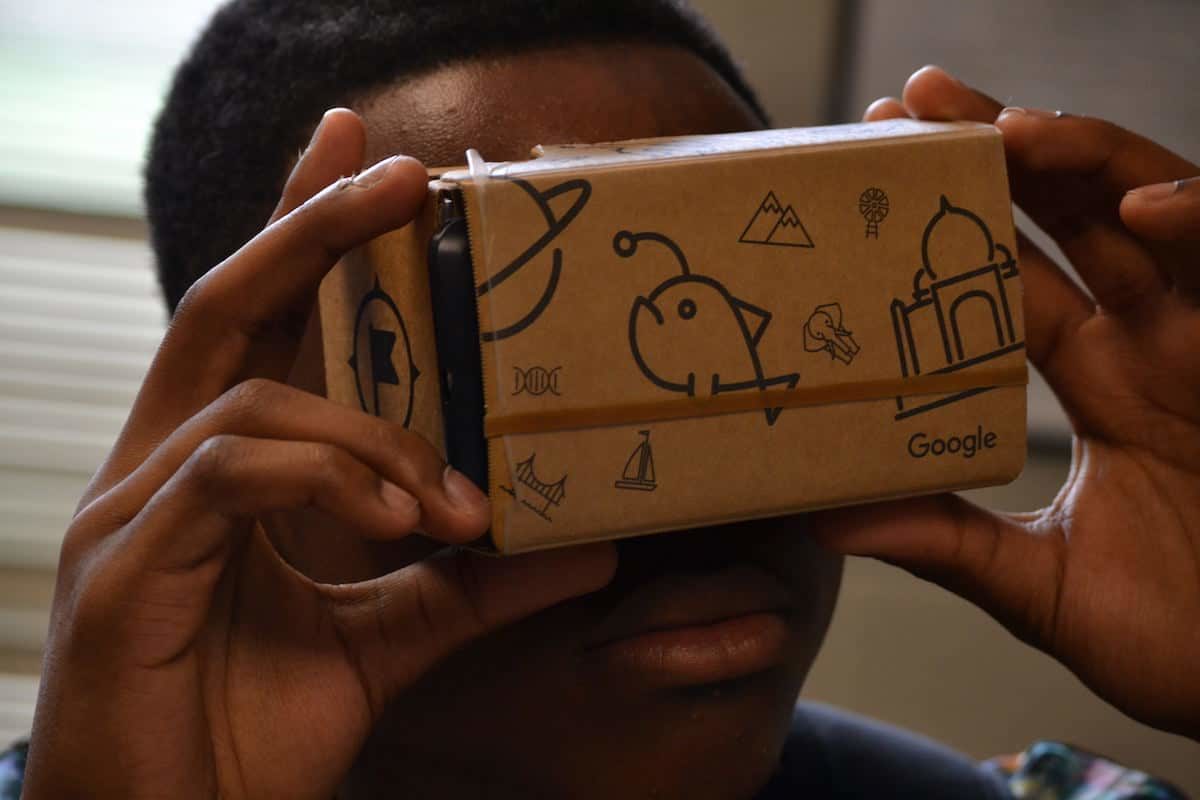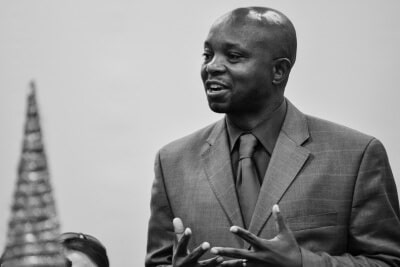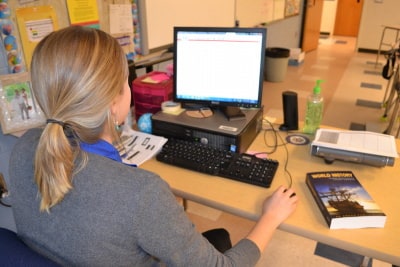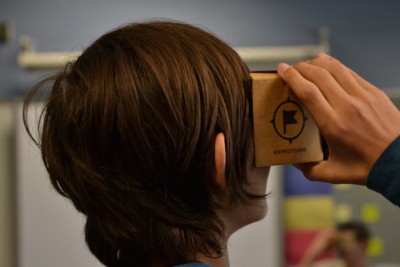
In early March, representatives from the internet giant Google visited Terrell Lane Middle School in Louisburg, N.C. to demonstrate and test the company’s new virtual reality application, Google Expeditions. The new app allows teachers to take their classes on virtual field trips, immersing students in experiences that bring abstract concepts to life and encourages them to discover the world outside the classroom.
The application, coupled with Google’s virtual reality viewer, Google Cardboard, allows students to tour collections of virtual reality panoramas — 360° photo spheres, 3D images and videos, and ambient sounds — annotated with details, points of interest, and questions that allows the virtual trips to easily integrate into the curriculum already used in schools.
The Cardboard viewer is also pretty unique. It is made almost entirely of cardboard and, for just the cost of materials, can be recreated by using Google’s free production template available online.
Laura Aldridge, the school’s librarian and media specialist, with the help of Becky Fry, seventh grade social studies teacher at TLMS, applied for the free Pioneers Program and coordinated the visit. According to Aldridge, the Expeditions application encourages students to visualize themselves in the content they’re studying — allowing them to contextualize their learning.
“It isn’t a futuristic gimmick; this type of learning is more dynamic than textbooks or worksheets,” she said.
Much like the cooperating agencies who have helped develop the application’s curriculum and locations, students are contributing to Expeditions by serving as beta testers for the product, helping to brainstorm new ideas and locations to include in Google’s virtual world before the product’s expected launch in December.
“Students really enjoyed the program,” says TLMS art teacher, Leanne Glace, whose seventh grade students “visited” 5 Pointz, a defunct street art exhibit in Long Island, New York.
“As a teacher, it was exciting to see my students looking around, seeing the detail and intricacies of the art as if they were standing on the street,” she said.
Her students’ pilgrimage to 5 Pointz only took a few minutes, as the Expeditions program used an unoccupied classroom in the school’s sixth grade building. Google provided a set of devices and Cardboard viewers for students, while Glace controlled the experience using a tablet that directed students on a guided tour of the street art exhibit. Once the tour began, students were standing throughout the room, heads gyrating as if they were curbside in Long Island.
Most of Glace’s students don’t have the opportunity to see much artwork, she explains, noting that she is always looking to use technology to help students gain a better understanding of the content she introduces.
“I try to find ways that connect my students with the artists and work we’re studying,” says Glace. “The Expeditions app could be a great tool for teachers to breathe new life into their classes and get students excited about the content.”
While virtual reality may come close, nothing will truly replace a real-time field trip. However, it was clear that students were excited about the Expeditions Explorers Program and its possibilities.
“I know it made an impact because the students didn’t want to leave for lunch,” said Aldridge. “They wanted to stay in the classroom to explore and to discuss the possibilities of the app.”
Recommended reading





